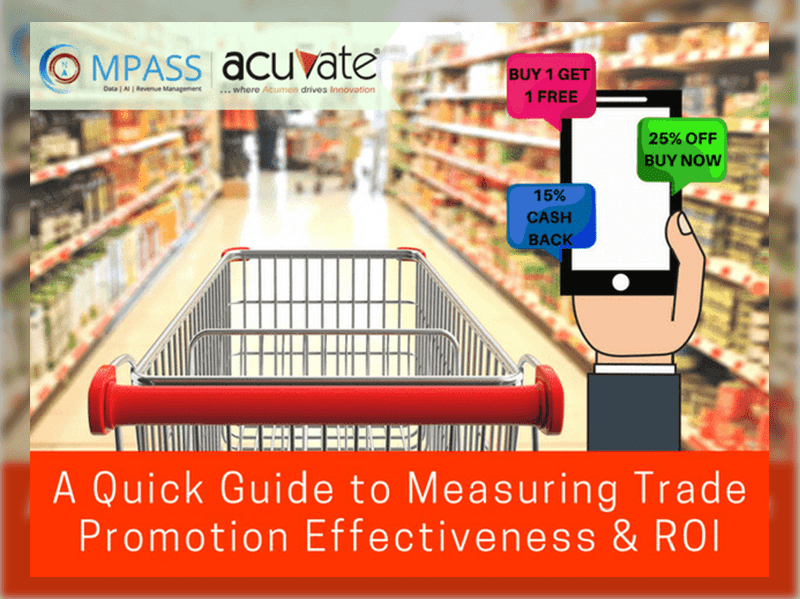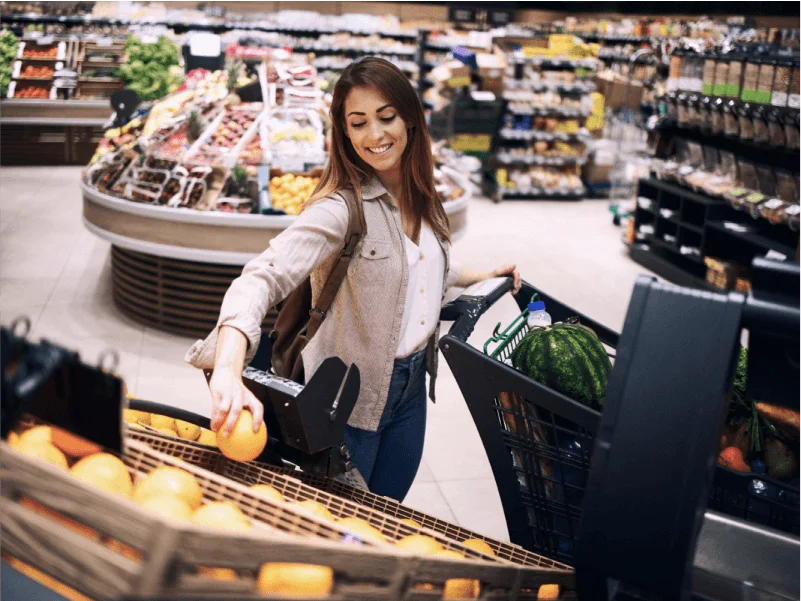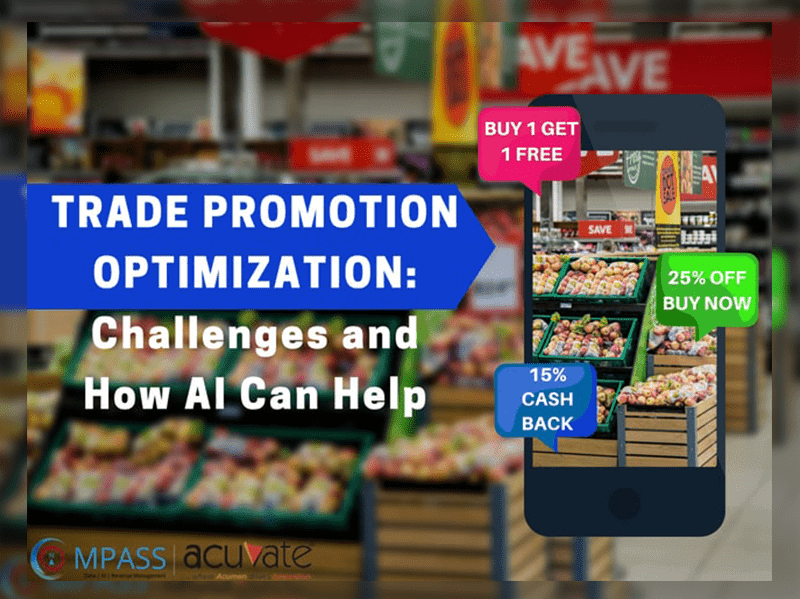“How to get the maximum bang for the buck?” is a common question retail and category managers struggle to answer with the implementation of trade promotions. It begins by identifying those metrics that can be used adaptively to optimize trade promotions in consequence of the changes in demand and inventory.
With offline and retail sales campaigns, it is still esoteric to determine which effort has triggered which sale. With trade promotions used by CPG companies, it gets all the more challenging to attribute. Another reason why trade promotions are game-changing to manufacturers and retailers in the CPG industry is that they function with micro-slim margins on each product.
Some trade promotions can yield up to an 800% ROI. When ‘selling more’ is the strategy you want to adapt to achieve higher volumes, then trade promotions is the only way to achieve it.
Different Trade Promotions and Their Implications
Trade promotions are one of the single biggest line items for manufacturers and Nielsen has confirmed that they account for almost 60% of the CPG company’s marketing budget. Some of the tactics applied as part of trade promotions affect the bottom line in a different way and support the sales targets based on the strategy adopted.
In-Store Displays
These include floor stickers, special racks, signs, banners, and posters, life-size display stands and demonstrations. These promote impulsive purchases and their placement among bull’s eye zone shelves trigger more of those sales. To transport conversion metrics recorded using in-store displays implementation of QR and RFID codes could help the marketer track sales.
Deals & Discounts
A temporary reduction of a product price while introducing deals and discounts is justified against the cost to customer acquisition. POS terminals that capture such data at the time of sale would reflect which of those offers are working better than the rest. This helps in determining ROI for deals such as BOGO and EDLP. Of the trade promotion investments, many CPG companies spend 30-40% of their entire trade fund on buying down prices every day (“Every Day Low Price” – EDLP) or extended price reductions.
Rebates & Coupons
These attract more traffic and footfall to a certain store. Conversions driven by cash-backs and rebates and product-specific coupons are tracked with the help of promo codes during billing.
Demos And Product Sampling
Conversions that are driven by the real-time experience of the product and response are used for lifestyle and electronic product categories. These are recorded by the salesperson driving this campaign at the point of contact with the customer.
Are Your Trade Promotions Generating The Desired ROI?
check out Compass: An AI-Powered Trade Promotion Optimization Solution
Exhibitions And Trade Shows
This setup is very similar to a retail outlet but handles highly targeted audience who have a higher likelihood to convert into customers.
Metrics Used To Measure Trade Promotion Effectiveness
To determine the high-yielding trade promotions, some metrics are very indicative of trade promotion effectiveness. We have collated some that can help you make better decisions with trade promotions.
POS Growth: The increase or decrease in sales of different product categories at a single POS and at all established POSs communicate how different trade promotions performed. Use of promo codes and coupons can track the campaigns that resulted in sales.
Read More: POS Data Analysis: How Can Retailers and Consumer Goods Companies Make the Most of it
Primary vs Secondary vs Tertiary Sales: Fluctuations and difference in secondary and tertiary sales will help you identify the most successful trade promotions. As primary sales are least affected by them.
Consumer Units: The total no.of units sold to customers by each product category and type is one of the most common and easiest metrics to track the performance of trade promotions.
Incremental Ratio: Incremental Revenue divided by the total revenue or Incremental Units divided by Total Units are some of the ways to calculate the incremental ratio. It helps in understanding the percentage of business that will stop occurring in the absence of any of the trade promotions that are running.
Spend Ratio: Incremental Revenue divided by total spend tells the spending ratio. This helps in managing to cost against each trade promotion.
ROI by trade promotion: ROI can never be ignored. Just like channel ROI and optimization, trade promotions can also be checked for the initial ROI that is being achieved. Once positive ROIs are achieved and identified, it leads to further scope for optimization. ROI helps in predicting future sales and optimizing existing trade promotions.
While these represent just a few metrics, and technology-enabled trade promotion optimization solution should be able to allow you to track those metrics that matter most to your business. Lack of an integrated approach to implement trade promotions would lead to ineffectiveness and lack of scope to improve existing promotional activities.
Once you have all the metrics configured, here is a quick approach that can be further customized.
- Identify the trade promotions that are working vs those that are not
- Collect insights on relative trends in performance
- Identify differences in relative customer and relative category performance
- Recommend action plans that result in continuous ROI/effectiveness improvement
Principles: How to Measure Promotional Effectiveness?
While designing a trade promotion campaign, tactics used to implement the strategy should be listed down. Once the tactics are agreed upon, they need to be aligned against measurable metrics. To analyze the competence of each trade promotion, smart and adaptive technology should be deployed.
Measure & Optimize Your Trade Promotions Effectively
with Compass: An AI-Powered Trade Promotions Optimization Solution
Technology would not only help in optimizing trade promotions but also help in predicting future sales, determining pricing strategies, devising profitable sale campaigns and strategies.
Following aspects actioned before implying the use of technology would ensure seamless flow of data at different points of the information flow.
- List out all data inputs and sources.
- Define data categories based on source and time.
- Create a flow of data and information between the optimization solution and different data input sources.
- Automate it using technology.
- Include areas of intervention and learning for AI.
- Include areas of intervention and learning for humans.
- Use metrics for trend comparison and identification.
- Measure effectiveness
- Draw a roadmap for optimization after identifying the top trade promotions.
Technology for Effective Trade Promotion Analysis and Optimization
Manufacturers of consumer packaged goods (CPG) can transform their sales systems to drive profitable growth—often adding 10 to 15 percent to the bottom line operating results on an ongoing basis—through improved trade promotion efficiency.
Technology facilitates in optimizing trade promotions not just with features to inform, but also to analyze. Good technological support enables a much more powerful and comprehensive statistical analysis foundation from which information about the true nature of incremental performance results can be derived.
The inclusion of strategic graphs like the BCG matrix enables in taking quick decisions about amendments and allocations within the existing trade promotions. Trade promotions usually consume 15 to 20% of a CPG or retail organization’s revenue, but only about 20% of the companies can measure the performance of a promotion at an event level.
Decision-makers often face several challenges while performing promotion effectiveness analysis like data stored in siloed systems, reliance on spreadsheets, inability to detect and analyze key metrics etc., resulting in low ROI because of gut-based decisions instead of data-driven decisions.
Advanced Analytics technologies can measure the effectiveness of trade promotions and highlight the ROI created, the sales uplift percent, and profitability. They not only tell which promotions are profitable but also suggest the next recommended action. What-if scenarios can be built as well to get a gist of predicted sales before running the promotion.
COMPASS is an AI-Powered Trade Promotion Optimization Solution leverages advanced technologies like Big Data, Machine Learning, Advanced Analytics and Chatbots to help run high-yield trade promotions. It spells out optimization opportunities through the dashboard. For better results, it allows you to run what-if and comparative analysis.
If you’d like to learn more about this topic, please feel free to get in touch with one of our AI and digital workplace consultants for a personalized consultation.




